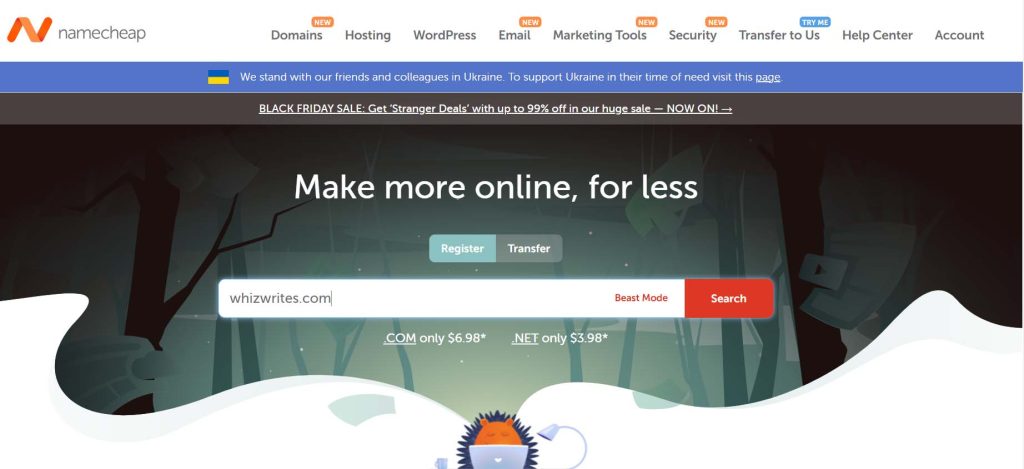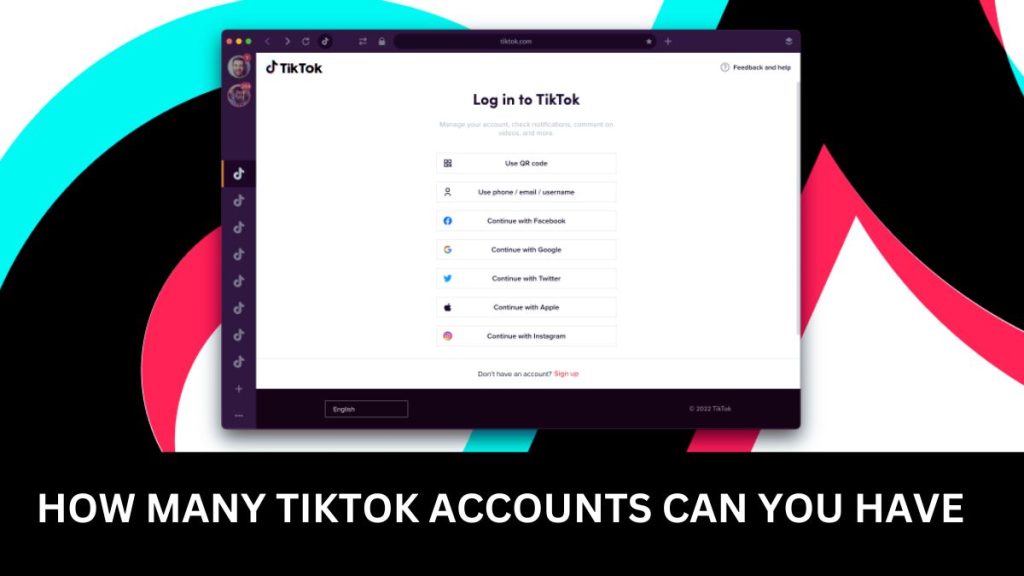A domain name is the human-readable address of a website on the internet, often used to access websites instead of numeric IP addresses. It typically consists of a unique combination of letters, numbers, and sometimes hyphens, followed by an extension (e.g., .com, .org) that helps identify the type or purpose of the website. Domain names are essential for branding, online identity, and making websites accessible to users. When choosing your domain name for your professional WordPress blog website, keep it simple and memorable to make it easier for your readers to find you online.
In the vast realm of the internet, where billions of websites vie for attention, choosing the right domain name is related to selecting the ideal location for your brick-and-mortar store. Your domain name is your digital storefront, the online identity of your brand or idea, and a key factor in your online success. In this comprehensive guide, we’ll walk you through the process of selecting the perfect domain name online, step by step, using straightforward language that everyone can understand.
- Why Does Your Domain Name Matter?
- Step 1: Brainstorming Domain Ideas
- Step 2: Domain Name Extensions
- Step 3: Checking Domain Name Availability
- Step 4: Domain Name Buying Tips
- Step 5: Testing Your Domain Name
- Step 6: Finalizing Your Domain Name
- Step 7: Building Your Website
- Step 8: Promoting Your Website
- Step 9: Monitoring and Adapting
- How to Choose a Domain Name for Your Business
- Choosing a Domain Name for a Personal Website
- Conclusion: Your Digital Identity Awaits
- FAQ's:
Why Does Your Domain Name Matter?
Before we dive into the nitty-gritty of selecting a domain name online, let’s understand why it’s so crucial. Your domain name serves several essential purposes:
- First Impressions: Your domain name is often the first thing visitors see. It’s your digital calling card. A memorable, relevant domain name can leave a lasting impression.
- Brand Identity: It helps build your brand’s identity. A well-chosen domain name reinforces your brand and makes it easier for people to remember and recognize you.
- Search Engine Visibility: A domain name that includes relevant keywords can boost your website’s search engine ranking. This is essential for attracting organic traffic.
- Credibility: A professional, trustworthy domain name can instill confidence in your visitors. It conveys that you’re a legitimate and credible entity.
- Ease of Sharing: A concise and easy-to-spell domain name is more shareable, both online and offline.
- Email Credibility: Your domain name is often associated with your email address. A professional domain lends credibility to your communications.
Now that we understand the importance of a domain name, let’s embark on the journey of selecting the perfect one.
Step 1: Brainstorming Domain Ideas
Keywords, Keywords, Keywords
When brainstorming domain name ideas, start with relevant keywords. These are the words and phrases that best describe your website’s purpose or niche. Think about what your website will be about and jot down the words and phrases that come to mind. For example, if you’re starting a blog about travel, keywords might include “travel,” “adventure,” “wanderlust,” and so on.
Be Unique
While keywords are essential, don’t forget to inject a dose of uniqueness. You want your domain name to stand out from the crowd. Avoid generic terms or phrases that could be mistaken for other websites. Think creatively and try to combine keywords in a unique way.
Keep It Short and Sweet
Short domain names are easier to remember and type. Aim for a name that’s concise and to the point. The longer the domain, the more likely people will mistype it or forget it altogether.
Say It Aloud
When you’ve come up with some potential domain names, say them aloud. Does it roll off the tongue? Is it easy to pronounce? Avoid names that are tongue-twisters or may be easily mispronounced.
Check for Trademarks
Before you get too attached to a domain name, check if it’s trademarked. You don’t want to run into legal issues down the road. Services like the United States Patent and Trademark Office (USPTO) can help you search for existing trademarks.
Domain Generators and Thesauruses
If you’re stuck, consider using domain name generators and thesauruses. These tools can provide fresh ideas and synonyms to help you find the perfect name.
Step 2: Domain Name Extensions
Once you have a list of potential domain names, it’s time to think about domain name extensions. These are the endings like .com, .net, .org, and many others. Here’s what you need to know:
.com Is King
If possible, go for a .com domain. It’s the most recognized and trusted domain extension. When people think of websites, they often default to .com. It’s also more likely to be remembered.
Industry-Specific Extensions
Some industries have their own domain extensions, like .edu for educational institutions or .gov for government websites. If your website falls into a specific category, consider an industry-specific extension.
Country Code Extensions
If your website is primarily targeting a specific country, you can use that country’s code extension, like .uk for the United Kingdom or .ca for Canada. Just be aware that this may limit your international appeal.
Protect Your Brand
Consider registering multiple extensions to protect your brand. Even if you primarily use a .com domain, having the .net and .org versions can prevent others from using a similar domain to steal your traffic.
Step 3: Checking Domain Name Availability
Now that you have a list of potential domain names and extensions, it’s time to see if they’re available. Here’s how:
Use Domain Registrar Websites
Domain registrars like GoDaddy, Namecheap, and Bluehost have search tools that allow you to check domain name availability. Simply enter your desired name and extension, and they’ll let you know if it’s taken.

Be Flexible
It’s possible that your top-choice domain name is already registered. Don’t be discouraged. Be flexible and open to alternatives. You might find an even better name during this process.
Avoid Hyphens and Numbers
While it’s tempting to add hyphens or numbers to secure your preferred name, this can make it more complicated for users to remember and type correctly. Try to stick with a clean, uncluttered name.
Step 4: Domain Name Buying Tips
Buy from Reputable Registrars
When purchasing your domain, choose a reputable registrar. Look for well-known companies with a track record of good customer service. This ensures a smooth and secure transaction.
Domain Privacy Protection
Consider opting for domain privacy protection. This service hides your personal information from the public WHOIS database, reducing the risk of spam and unwanted solicitations.
Renewal Costs
Be aware of the domain renewal costs. Some registrars offer low initial prices but charge higher renewal fees. Read the fine print and choose a registrar with transparent pricing.
Avoid Long-Term Commitments
While it’s common to register a domain for multiple years, avoid extremely long commitments until you’re sure about your website’s long-term future. Many registrars offer discounts for longer-term registrations, but it’s wise to start with a shorter commitment initially.
Step 5: Testing Your Domain Name
Before finalizing your domain purchase, it’s a good idea to test how your chosen name looks and feels. Here’s what to do:
Type It Out
Type your domain name as if you were visiting your website. Does it look good on the screen? Is it easy to read and understand?
Avoid Unintentional Words
Be cautious of unintentional words that may form when combining words in your domain. For example, “therapistfinder.com” could be misread as “the rapist finder.” Test your domain on friends and family to catch any unintended associations.
Mobile-Friendly
Check how your domain name appears on a mobile device. With so many users accessing websites via smartphones, it’s essential that your domain is mobile-friendly.
We mentioned “Mobile-Friendly” in the context of testing your domain name, we are referring to the importance of ensuring that your chosen domain name looks and functions well on mobile devices, such as smartphones and tablets. Here’s a more detailed explanation of why mobile-friendliness matters and how to evaluate it:
Mobile-Friendly Design:
In today’s digital age, a significant portion of internet traffic comes from mobile devices. Many users access websites on their smartphones, and it’s crucial for your website, including your domain name, to provide a positive experience for mobile users. A mobile-friendly design ensures that your website adapts to various screen sizes and resolutions, making it easy to navigate, read, and interact with on mobile devices.
Why Mobile-Friendliness Matters for Your Domain Name:
- User Experience: When users visit your website on their mobile devices, they should find your domain name easily readable and accessible. A mobile-friendly domain name is one that doesn’t get cut off or distorted on smaller screens.
- Navigation: Mobile-friendly domain names also consider the ease of navigation. If your domain name is too long or complex, it might be challenging for users to type or remember on their mobile keyboards. A mobile-friendly domain name is concise and user-friendly.
- Load Times: Mobile users often have limited patience for slow-loading websites. A mobile-friendly domain name, along with a well-optimized website, contributes to faster load times, ensuring that visitors can access your site quickly.
- Search Engine Rankings: Search engines, like Google, consider mobile-friendliness when ranking websites in mobile search results. Having a mobile-friendly domain name and website can positively impact your search engine rankings on mobile devices.
Evaluating Mobile-Friendliness for Your Domain Name:
To ensure that your chosen domain name is mobile-friendly, consider the following:
- Test on Different Devices: View your domain name on various mobile devices with different screen sizes and orientations. Make sure it appears legible and doesn’t require excessive zooming or scrolling.
- Load Speed: Check the load speed of your website on mobile devices. Slow load times can deter mobile users. Tools like Google’s PageSpeed Insights can help you assess and improve your website’s mobile performance.
- Usability: Ask friends or colleagues to visit your website using their smartphones and provide feedback on the ease of use. Pay attention to any issues they encounter while navigating or interacting with your domain name.
- Responsiveness: Ensure that your website’s design is responsive, meaning it adapts to different screen sizes seamlessly. Responsive design is a fundamental aspect of mobile-friendliness.
Social Media Availability
Consider the availability of your domain name on social media platforms. Consistency across all online channels is essential for brand recognition.
Step 6: Finalizing Your Domain Name
After going through the previous steps, you should have a clear winner for your domain name. Here’s how to finalize your choice:
Secure Your Domain
Go ahead and register your chosen domain name with your selected registrar. This is an exciting step toward establishing your online presence.
Set Up Hosting
Once you have your domain, you’ll need a hosting service to store your website’s files. Many registrars offer hosting services, making it convenient to set up everything in one place.
Configure DNS Settings
DNS (Domain Name System) settings connect your domain name to your hosting server. Your hosting provider will guide you through this process, which is essential for your website to go live.
Step 7: Building Your Website
With your domain name secured and hosting in place, it’s time to build your website. Consider using user-friendly website builders like WordPress or Wix. These platforms offer templates and tools that simplify the web design process.
Step 8: Promoting Your Website
Now that your website is up and running, it’s time to spread the word. Here are some strategies to promote your new online presence:
Content Creation
Regularly create and publish high-quality content related to your website’s topic. This will help attract and retain visitors.
Social Media
Leverage social media platforms to engage with your audience. Share your content, interact with followers, and build a community around your brand.
SEO (Search Engine Optimization)
Optimize your website for search engines by using relevant keywords, meta tags, and high-quality backlinks. This will improve your visibility in search engine results.
Email Marketing
Build an email list and send out newsletters or updates to keep your audience informed and engaged.
Networking
Connect with others in your industry or niche. Collaborations and partnerships can help you reach a broader audience.
Step 9: Monitoring and Adapting
Your online journey doesn’t end once your website is live. Continuously monitor your website’s performance using tools like Google Analytics. Pay attention to user feedback and adapt your website and content accordingly.
How to Choose a Domain Name for Your Business
When it comes to selecting the perfect domain name online for your business, there are several key factors to consider. Let’s explore how you can make an informed decision:
Domain Name Generator: Your Creative Companion
Before diving into the process of choosing a domain name for your business, consider utilizing a domain name generator. These tools can provide you with a myriad of creative ideas and suggestions based on your business niche and keywords. A domain name generator can be an invaluable resource in your quest for the perfect online identity.
Unique Website Name Ideas: Standing Out from the Crowd
In a sea of websites, uniqueness is a virtue. While selecting your domain name, strive for originality. Stand out from the crowd with unique website name ideas that capture the essence of your business. Avoid common phrases or clichés, and aim to create a name that is memorable and distinctly yours.
Good Domain Names Examples: Learning from the Pros
One effective way to learn the art of selecting the perfect domain name online is by studying good domain names examples. Analyze successful websites within your industry or niche. What makes their domain names effective? Identify patterns and best practices that you can apply to your own naming process.
Choosing a Domain Name for a Personal Website
If your goal is to create a domain name for a personal website, the process involves a more intimate connection to your identity. Here’s how you can make it personal and unique:
Reflect Your Identity: It’s All About You
When choosing a domain name for a personal website, consider how it reflects your identity. Are you a photographer, writer, or artist? Let your domain name showcase your talents and passions. Use keywords that resonate with your personal brand.
Make It Timeless: Future-Proofing Your Online Presence
While it’s essential to express your current interests and talents, think about how your domain name will age over time. Aim for a timeless domain name that will remain relevant as your personal journey evolves.
How to Choose a Domain Name for Your Blog
Blogs are a popular way to share thoughts, ideas, and expertise with the world. When choosing a domain name for your blog, consider the following:
Keywords Matter: Boosting Visibility
To enhance the visibility of your blog in search engines, include relevant keywords in your domain name. For instance, if you’re a food blogger, consider incorporating keywords like “food,” “recipes,” or “cooking” into your domain. This can significantly impact your blog’s search engine ranking.
Keep It Catchy: Memorable and Shareable
A memorable domain name is more likely to be shared and remembered by your audience. Aim for a catchy domain name that rolls off the tongue and is easy to spell.
Conclusion: Your Digital Identity Awaits
In conclusion, selecting the perfect domain name online is a pivotal step in establishing your digital identity. Whether it’s for your business, personal website, or blog, the right domain name can make a significant difference in your online success. Utilize domain name generators, study good domain names examples, and infuse creativity into your naming process. Your unique website name ideas can set you apart in the vast online landscape.
Now that you’ve learned the art of selecting the perfect domain name online, take the next step with confidence. Your digital identity is waiting to be discovered, and with the right domain name, you’ll leave a lasting impression on the web.
Now, armed with this knowledge, you can confidently select the perfect domain name and embark on your online journey. Remember, your domain name is the digital key to your online success. Choose it wisely, and the internet will open its doors to your brand or idea. Good luck!
In addition to choosing the perfect domain name, it’s essential to consider elements like logo designing, creating user-friendly menus, submenus, and understanding concepts like the ‘Google Sandbox‘ for a well-rounded online presence.





